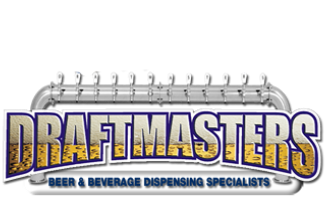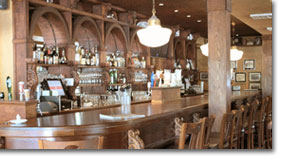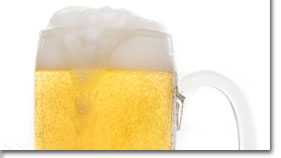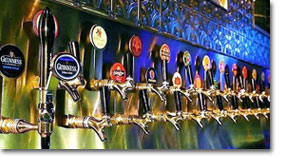

Camcarb is proud to announce the launch of it's new sister company Draftmasters; specialists in the installation of complete or partial draft systems including assembly and installation of refrigeration units, kegs, presurized lines, heads and taps. Literally end to end services when combined with Camcarbs highly regarded beer gas supply and service.
Visit the new Draftmasters website at www.draftmasters.ca....
Camcarb is the leader in supplying the hospitality and restaurant industry with certified food grade compressed gases, such as food grade certified CO2, and specialty gases like BeerGas. We remove the stress of maintaining gas stocks, and provide expert advice on managing your compressed gas inventory. This includes delivering and connecting cylinders, removing empties, managing your inventory, and providing expertise and guidance on the best solution to match your specific requirements. Camcarb has a full selection of hospitality gases, from BeerGas to food grade certified carbon dioxide, in a wide variety of cylinder sizes. Camcarb specializes in supporting some of the following industries, commercial uses, or home based examples:

 Restaurants
Restaurants Pubs/Bars/Dance Clubs
Pubs/Bars/Dance Clubs Banquet Halls
Banquet Halls Arenas/Stadiums
Arenas/Stadiums Theatre/Concert Halls
Theatre/Concert Halls
 Events (Concerts, Sports, Parties, Weddings)
Events (Concerts, Sports, Parties, Weddings) Golf Courses
Golf Courses Resorts
Resorts Company Cafeterias/Lunch Rooms
Company Cafeterias/Lunch Rooms Home Entertainment (Bar, Patio)
Home Entertainment (Bar, Patio)
Call us and we can assist you in any questions regarding your food quality compressed gases to BeerGas needs.
What Is Food Grade Certified CO2?
Food grade certified CO2 is used in soda machines and such, added to pop syrup to carbonate the liquid, whereas commercial grade CO2 is used for industrial uses such as welding applications.
What Is Beer Gas?
Gas (CO2 and sometimes N2) is a normal ingredient in beer, and is used to push beer from the keg to the glass. Up to now, the tradition was to use Co2 to push beer out of a keg. But pure Co2 causes too much foam. BeerGas is a special mixture of nitrogen and CO2 designed to correctly carbonate beer without excessive foam. The reduced CO2 content of the gas maintains the perfect carbonation level as the nitrogen pushes the beer from keg to tap. By controlling the carbonation level, BeerGas greatly reduces foam at the tap. The result, a perfect glass of beer with a creamy head and no wasted foam. BeerGas maintains optimum carbonation right to the bottom of barrel. The right balance of gases will keep the dissolved gas levels perfect, whereas the wrong balance will damage the beer by changing dissolved gas levels. Any change in gas levels will affect pressure and temperature, and impact both flavour and appearance of the beer.

Advantages of using BeerGas
Maximize Your Beer Profits: Minimize beer waste and Extend the Life of your Beer System.
Faster Pours: Allows you to increase the tap pressure without over-carbonating the beer. Higher tap pressure means quicker fills.
Better Tasting Beer: Every beer is brewed to a specific carbonation level. Since mixed gas maintains this level, you serve beer the way the brewer intended.
The Science Of Beer
Pressure is the force of gas molecules hitting the walls (and floor and ceiling) of a container. The amount of force (pressure) depends on the number of molecules hitting the surfaces and the speed at which they hit. Pressure changes if we change temperature, volume or the number of molecules. Under normal beer dispensing conditions gas molecules are constantly going in and out of solution in the beer. Gas Molecules hit the surface and get absorbed into the beer while dissolved molecules hit the surface and escape the beer. If we increase the pressure, the gas molecules hit the surface of the liquid faster, and/or more often. After a pressure increase, more molecules are going in than are going out. This process continues until equilibrium is reached. At equilibrium, enough molecules are absorbed that the same number of molecules are leaving as are entering.

When the temperature rises, the dissolved molecules move faster, hitting the surface harder and more often, causing more of them to escape the beer. As it gets colder the opposite is true. Therefore, colder beer temperatures keep more gas in solution if the pressure remains constant. Warmer temperatures require more pressure to keep the same amount of gas in solution.
If the keg is filled with more than one type of gas molecule (N2 and CO2 for example) each gas acts independently. If there were enough CO2 molecules in a keg to generate 15 psi of CO2 and you added enough N2 to bring the total pressure to 25 psi you still have 15 psi worth of CO2 molecules hitting the surface and entering solution. If the CO2 was in equilibrium before adding the N2 it will stay at equilibrium after adding the N2: Adding enough N2 to take the total pressure to 1000 psi will not change the number of CO2 molecules or the force with which they strike the surface or the amount of CO2 dissolved in the beer.
For the most part, we all live at one atmosphere of pressure. One Atmosphere is 14.7 (15) psi above a complete vacuum. Absolute pressure (PSIA) starts at complete vacuum (no gas molecules at all). Gauge Pressure (PSIG) is always indicated from one atmosphere which changes with altitude and barometric pressure. When we think of gas dissolved in beer it is necessary to think in terms of absolute (PSIA) pressure since to get all of a gas out of a liquid at normal temperatures it is necessary to expose it to a vacuum. A keg half full of beer and half full of CO2 at 0 PSIG still has 15 PSIA worth of CO2 molecules doing their thing.
Welding Equipment Patio Heaters Services Superstore and Pick-Up Counter Delivery & Rush Services Rental Repair Hydrostatic Testing Centre
Propane, Refill, Recertification & Requalification Centre Safety Industries Locator Contact Us Legal Disclaimer Sitemap

